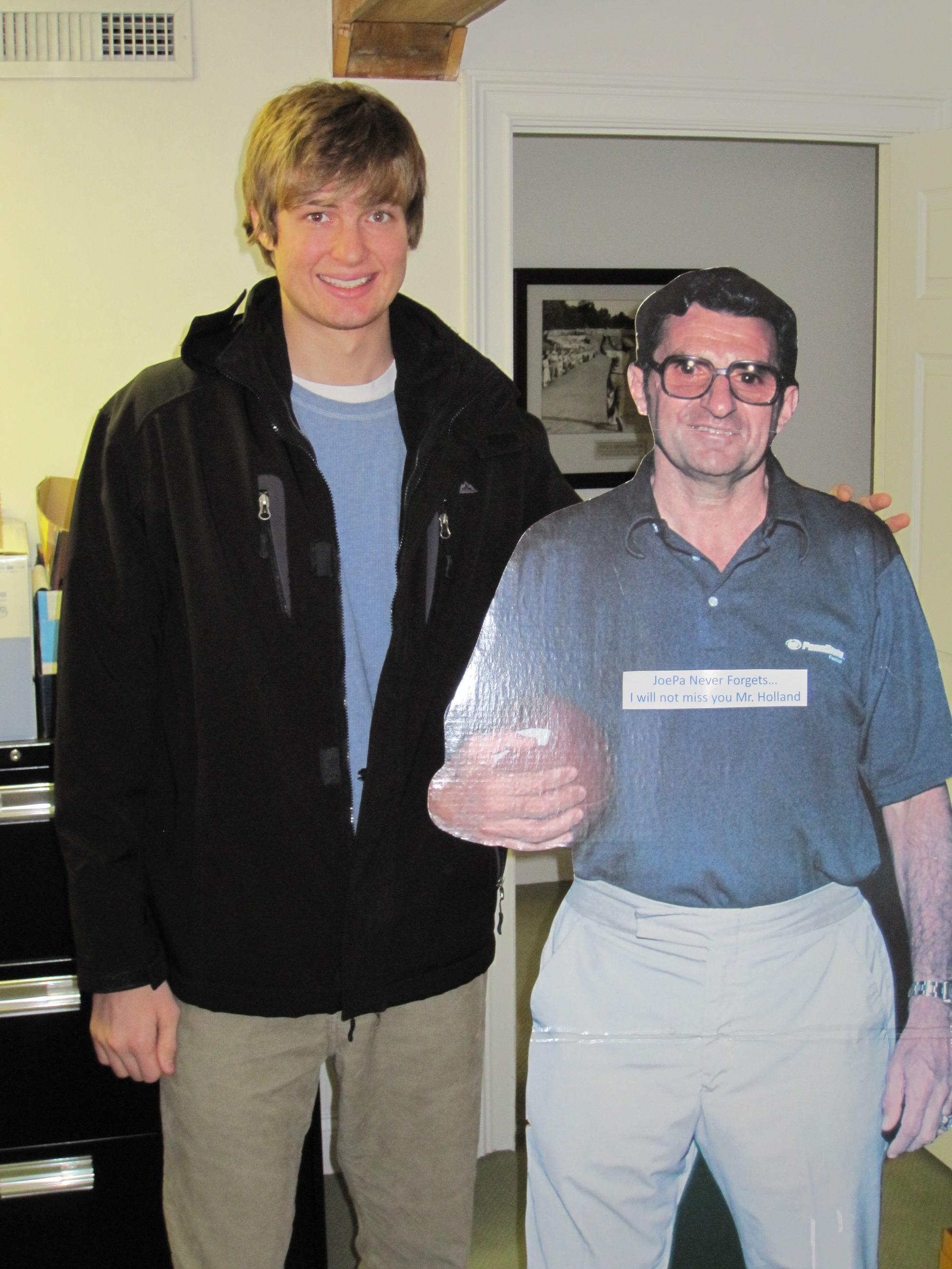ALL4’s: Is That Your Final Answer?
Last Month’s Answer and Winner:
We don’t think that Watson of IBM’s creation could have answered our September “Is That Your Final Answer” question any more quickly than did Kelly Roberts, the Southeast Regional Environmental Manager of Stericycle, Inc. Within seconds, Kelly answered that Russell Train served in the Nixon and Ford administrations and he then provided the bonus answer that William Ruckelshaus served under Presidents Nixon and Reagan. It hardly seems possible that U.S. EPA, which was established by President Nixon in 1970, has been around for 41 years now; some of us feel suddenly very dated. Regardless, thanks to everyone who participated in this month’s contest.
Question:
With October’s question, we highlight that there are only three more questions that will allow you to qualify for the grand prize drawing at the end of the year. And just what is that grand prize drawing? Well, one of the 12 monthly winners, selected at random, will receive a $500 American Express Gift Card. So with this grand prize as incentive, good luck with this month’s question.
Let’s see how many people were paying attention to the articles in the August edition of 4 The Record. In 2004, ALL4 founded a sister company that provides waste repurposing and alternate fuel services to our industrial clients. What is the name of that company?
Answer:
Please e-mail your answer to final.answer@all4inc.com. Include in the e-mail your name, answer, and address (to receive your prize).
The final answer feature of 4 The Record is designed to test your knowledge across the 
ALL4’s Employee Spotlight: Tom Saylor
Each quarter ALL4 interviews one of our employees, highlighting some of his or her career and thoughts about ALL4. This month’s employee spotlight is on Staff Engineer Tom Saylor.
Why did you pursue a career in the air quality consulting business coming out of college?
In college, I had no idea that there was a world of air quality consulting. I stumbled upon ALL4 at a career fair in my junior year of college. I was pursuing a degree in chemical engineering and I knew that I wanted to find a job in the environmental side of chemical engineering. I remember walking away from that career fair with some curiosity and interest in ALL4. After doing some more research about air quality, I scheduled an Intro to Environmental Engineering course in addition to my chemical engineering courses. I enjoyed it, and knew that I was ready to apply to ALL4 in my senior year for a fulltime engineer position.
What piece of advice would you give to college students looking for a position in the consulting business?
Never stop learning. Consultants work on many different projects for many different companies, day in and day out. In fact, many times, you will find yourself learning as you go. And don’t be afraid to ask questions. Rookies can make good consultants because they do not have their minds fixed on a certain set of ideas. They have a fresh set of ideas and an innovative way of thinking.
What are your roles at ALL4?
My primary role at ALL4 is a staff engineer. I work on a variety of projects for clients every day of the week. I also write entries for five (5) jurisdictions for EnviroReview (Not familiar with EnviroReview? Check the website out for more information here). Also, I am a part of the Air Quality Modeling Initiative team. As we grow as a company, we want all of our employees to be proficient in the modeling aspect of air quality. I am on the team that leads this new learning. Finally, I am on the Recess Committee at ALL4. The Recess Committee is in charge of planning company events that build chemistry between the employees and increase the company morale.
What do you like best about your career?
I like the non-complacency. I like how the project work is different each week. Not only is the work different, but the clients are different too. We get the opportunity to work with clients from a plethora of fields, ranging from the cement industry to the chocolate industry. Also, in a small company, there are opportunities to do some extracurricular activities that would not be available to me in a larger company. These activities are also a fun change of pace.
Who is the funniest person in the office and why?
There are a bunch of funny people in the office, but I think that Mr. Robert Kuklentz (Bob) has a stellar sense of humor. Not only does he make timely Seinfeld references, but he also is clever with some one-liners. For instance, I remember my first week on the job (before I really knew everyone); I remember being in a training seminar with Bob. I remember there being a question relating to problem solving. It involved a hypothetical situation in which we worked for NASA and we were working on a rocket-science project. During quality assurance, we found out that the coordinates were off. How would we handle the situation? Bob quickly replied that he would simply “turn them back on.” Comic genius.
What has been your biggest struggle working here?
Learning all of the acronyms. I knew a handful coming out of school (like NAAQS, CERCLA, and NESHAP). But you hear about 50 a day, working in this business…AIMS, RACT, LAER, SMOP, RBLC…. You learn five, then you hear six new ones. It’s crazy. I would like to know them all by the time I retire; I think that should be plausible.
What is the most personally satisfying thing you have accomplished so far?
I am proud to have run an air model on a facility for one of our clients. It is definitely not something that I learned in school, so I’m proud that I could learn the basic ins and outs of air modeling during my first three months here. This is another example on why it is important to keep learning in this business.
What was your biggest surprise since joining ALL4?
The biggest surprise to me is how everyone does work above and beyond billable work. Whether it is joining the Marketing Team, or helping out around the community, everyone participates in one way or another. It is one thing to help out with this extracurricular work, but everyone here does it willingly because they want to see the company succeed. That is a true measure of employee character.
Why did you decide to join ALL4?
Like I mentioned before, I knew that I wanted to pursue a career in the environmental side of chemical engineering. After researching and interviewing with ALL4, I knew that this company was where I wanted to go. I like the “work hard, play hard” mentality and how well the employees are treated. I knew that I would be happy working for this company.
Who is the best dresser at ALL4?
This is an unfair question. There are so many styles at All4; you can’t group them all into one category and claim that one person dresses better than the rest.
What is the most unique thing about working here?
The most unique thing about ALL4 is the staff of employees that we have working here. You can’t find a better collection of people anywhere else. Everyone works well together and that is essential in a company that relies on teamwork. The setting is also pretty unique. Who else have you talked to that said that their office is an old renovated barn?
I know you like to prognosticate the Penn State football scores each week; give me a prediction for the Nebraska game and a projected record at season’s end.
This will be a great matchup. I’m hoping to go to this game, actually. I think this game will be the host to ESPN’s Gameday that week. Nebraska has a good football team this year, but the advantage goes to Penn State since the game will be at Beaver Stadium, with the best student section in the country. Penn State’s record at home is outstanding, which is why I’m giving them the edge in this matchup. I predict that the score will be PSU-24 NEB-20. At the end of the season, we will have a record of 11-1, JoePa will be preparing his team for the first ever Big Ten Championship game against Michigan State, and the only thing standing between us and a chance at the National Championship will be that loss to Alabama in week 2.
Pennsylvania NOx Allowance Alert
For non-electric generation unit (non-EGU) sources that have either allowance surrender requirements or regulatory compliance options that allow the surrender of NOx allowances under Pennsylvania regulations, the new U.S. EPA Cross-State Air Pollution Rule (CSAPR) may render such requirements meaningless. U.S. EPA has indicated that they may not allow non-EGUs to use allowances that are intended for compliance with CSAPR. In the promulgation of CSAPR, U.S.EPA has stated that the emission reductions under CSAPR will not cause a disruption in the supply of electricity to customers. This aspect of the rulemaking is certainly one of the points in the current legal challenges to the rule that have been filed. All of U.S. EPA’s assumptions under their electric grid stability analysis in support of CSAPR could be questioned if the pool of allowances that are available to EGUs is reduced through their use by non-EGUs.
The impacts of this position will impact affected facilities beginning in 2012 since nothing is affected for the current 2011 allowance program under the Clean Air Interstate Rule (CAIR). Even if U.S. EPA would allow the purchase of CSAPR allowances, the projected increase in costs for such allowances could be very bad news for anyone who relied on their purchase and use for compliance purposes. Planning and budgeting for 2012 for the affected non-EGU sources is impossible at the moment.
Greenhouse Gas 2012 Reporting: No Rest for the Weary!
U.S. EPA’s Greenhouse Gas (GHG) reporting deadline for calendar year 2010 passed on September 30, 2011. But there’s no rest for the weary! According to 40 CFR Part 98 (the Mandatory GHG Reporting Rule), data for reporting years 2011 and beyond will be due March 31st of the following year. That gives reporters about five (5) months from now to finalize GHG emissions from reporting year 2011 and to enter them into e-GGRT (U.S. EPA’s Electronic GHG Reporting Tool).
Now is the time to update your GHG Monitoring Plans. Pursuant to 40 CFR Part 98 §3(g)(5), reporting entities are required to maintain a GHG Monitoring Plan describing their methods for gathering the required data and calculating their GHG emissions. Reporters must revise the Plan to reflect changes to production processes, monitoring instrumentation, and quality assurance procedures. It is also the reporters’ 
ALL4 has been immersed in the GHG Reporting Rule and e-GGRT data reporting system since day one. We’re positioned to assist reporting facilities with the efforts required to submit GHG emissions reports, including assembling GHG monitoring plans, calculating emissions, and submitting reports.
October is Shaping Up to be the Scariest Month of the Year
If you are someone that likes scary stories, then I have just such a story for you. Our frightful tale begins on September 13, 2004 when U.S. EPA promulgated National Emission Standards for Hazardous Air Pollutants (NESHAP) for new and existing boilers and process heaters located at major sources of hazardous air pollutants (Boiler MACT). Major facilities across the nation spent untold dollars and man-hours conducting emissions testing to understand how their boilers and process heaters fared against the Boiler MACT standards; developing compliance strategies and fuel sampling plans; and optimizing boiler operations and control devices. And just when all of the finishing touches were being put into place, the United States Court of Appeals for the District of Columbia Circuit (the Court) vacated and remanded the Boiler MACT standard on June 19, 2007 – less than three (3) months before the compliance date. All of the preparations had been for naught. The nation exhaled a collective sigh of relief and got back to work. The monster had been defeated, or so they thought.
Many years happily went by, and just when the Boiler MACT had become a faded memory, on March 21, 2011, the Boiler MACT rose again! This time, the Boiler MACT was bigger, and meaner, and stronger than ever, and the regulated community was stricken with horror by what they saw. How did the rule grow to be so strong? How did it evolve into such a monster? What can we do to meet these impossible emission standards? Will it kill us all? Panic ensued, and just when it seemed that all hope was lost, on May 18, 2011, U.S. EPA issued a stay on the effective date of the Boiler MACT, telling the regulated community that it was going to reconsider certain provisions of the rule that had not undergone public comment. And so, the monster slept once again, and facilities everywhere continue to watch and wait for it rise again.
U.S. EPA was anticipated to unveil its latest incarnation of the major source Boiler MACT at the end of October 2011 when it would publish yet another draft version of the rule; however, that timeline was recently extended until the end of November. Will the rule be
October NAAQS Happenings
ALL4’s September 4 The Record included an article that provided an update on the status of the new 1-hour sulfur dioxide (SO2) and nitrogen dioxide (NO2) National Ambient Air Quality Standards (NAAQS). The article discussed both the implementation of the new standards and information on the updated air dispersion modeling approaches used to demonstrate compliance with the NAAQS levels. Just prior to publication of the article, U.S. EPA released draft guidance outlining the process by which states should perform dispersion modeling to make attainment and nonattainment decisions related to the 1-hour SO2 NAAQS. Since the release of the U.S. EPA guidance over the past few weeks, several states have begun requesting source-specific information from large facilities for state agency use in performing SO2 air dispersion modeling. After a long period of uncertainty and legal challenges to the SO2 NAAQS implementation approach (the legal challenges are ongoing), SO2 modeling to support attainment or nonattainment designation has arrived and will have wide-reaching, near-term impacts across industry. In fact, we recently published a 4 The Record Extra! that was dedicated exclusively to addressing the details of U.S. EPA’s NAAQS modeling guidance for SO2 and how you can plan ahead.
With the current focus on the SO2 NAAQS and dispersion modeling, all is (relatively) quiet on the NAAQS front for other criteria pollutants. The 1-hour NO2 NAAQS implementation process continues and does not (yet) involve specific facility modeling. 
In light of these many developments, don’t miss ALL4’s FREE November 17, 2011 “What YOU Need to Know About the 1-Hour SO2 NAAQS Implementation Process” Webinar.



